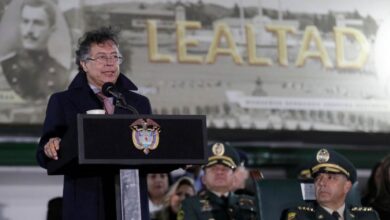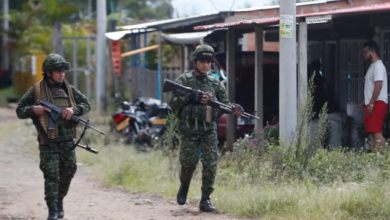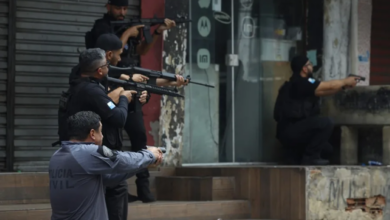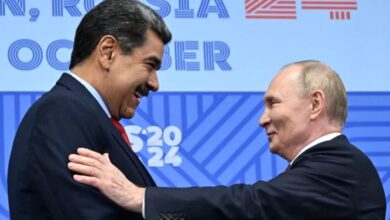Colombia Must Relearn Hard Lessons Before History Loops Back Violently
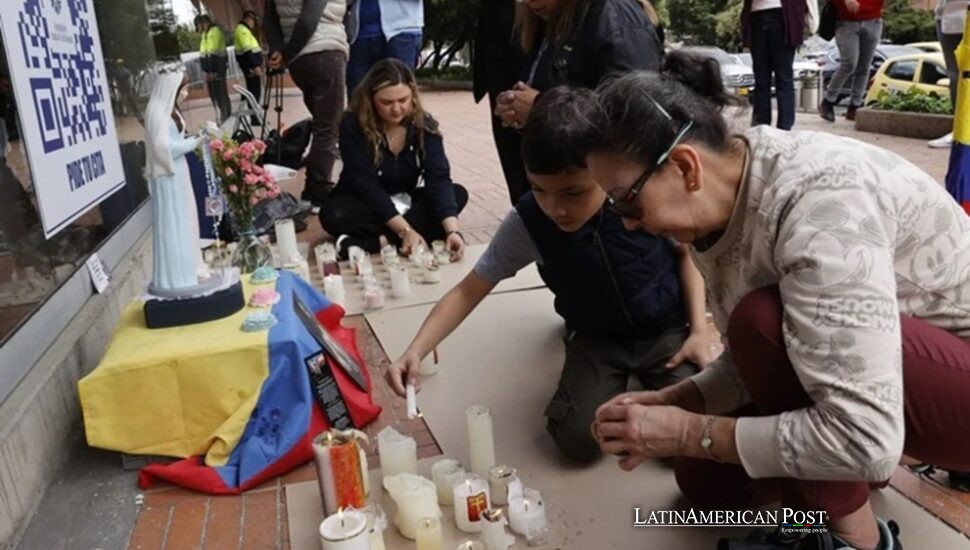
Assassinations, drone attacks, and mass displacement have pushed Colombia back into its darkest rhythms. Dreams of “total peace” now collide with armed groups on the march, a state losing ground, and politics splintering toward another combustible election season.
Echoes Across Decades
Colombia’s headlines are beginning to look like grim flashbacks. The assassination of conservative senator Miguel Uribe Turbay just as he launched his presidential campaign felt eerily like 1989, when drug barons turned political candidacies into death sentences. Soon after, a truck bomb outside an air base and a drone strike that brought down a Black Hawk helicopter left 19 dead. For Colombians old enough to remember, the scenes conjured the years when the FARC regularly laid siege to towns and the country’s very survival seemed in doubt.
No one suggests Colombia is back in the bloodiest years of the 1990s. But the direction is unmistakable: armed groups multiplying, innovating, and expanding, while the state recedes. In the Pacific lowlands, along the Venezuelan frontier, and deep in the Amazon, coca cultivation, illegal mining, and smuggling routes now bankroll warlords who act like parallel authorities. Where once guerrillas and traffickers hid from the state, they now tax, recruit, and govern in broad daylight. Ceasefire talks meant to cool violence have often served as cover for expansion, while police and soldiers thin out, underfunded and increasingly reactive.
The warning lights are not subtle. Colombia’s security indicators are sliding, and communities feel it. In towns once relieved to see teachers, judges, and small businesses return after the FARC’s 2016 demobilization, fear now stalks the roads again. Families pack hurriedly, leaving behind homes for the second or third time. The sense that history is repeating itself is more than memory; it is lived reality.
The Opportunity That Slipped Away
The tragedy is sharper because Colombia had made genuine strides. Álvaro Uribe’s government (2002–2010) expanded and professionalized the armed forces, built a helicopter fleet that overcame geography, and pushed police into every municipality. Killings fell, roads reopened, and commerce revived. But the stain was deep: over 6,400 civilians—mostly poor young men—were murdered by soldiers and presented as guerrillas killed in combat, the notorious “false positives” scandal. Trust in the uniform cracked, leaving scars that still shape how communities read state authority.
Juan Manuel Santos (2010–2018) used that military pressure to strike the 2016 peace accord with the FARC. For the first time, Colombia had a detailed plan to replace rebel economies with legal livelihoods, extend schools and clinics, and build roads into forgotten peripheries. It was a blueprint for converting military victory into sustainable peace. But politics intervened. The accord became a proxy war in every election and on every television screen. A coca boom during Santos’s last two years sapped legitimacy. Iván Duque, Uribe’s protégé, implemented the deal slowly and selectively, while politicizing security forces. A window that should have been flung open narrowed instead.
The failure was not inevitable. But by the time Gustavo Petro took office in 2022, the momentum was gone. Colombia had a peace plan on paper, but not on the ground.
Total Peace Meets Total Disorder
Petro promised something audacious: “total peace.” The idea was to negotiate not only with the ELN guerrillas and FARC dissidents, but also with the Clan del Golfo and dozens of post-paramilitary mafias. Ceasefires were offered up front, before concessions. Violence, the theory went, would drain out if every armed actor were given a seat at the table.
Three years later, the ledger looks bleak. The Clan del Golfo now operates in 238 municipalities, its strength having doubled since 2018 to more than 7,500 fighters. The ELN has expanded operations and embraced drones as weapons of terror. In January, ELN units in Catatumbo mounted a coordinated offensive that killed rivals and forced 20,000 civilians to flee. FARC dissident groups have grown from two to four factions, nearly doubling in workforce to around 8,000. Attacks on security forces hit their highest level since 2010, with 295 incidents in just one year.
Ceasefires that lacked enforcement gave warlords breathing room to rest, recruit, and tax. Communities quickly learned that the loudest authority in the countryside once again carried no state insignia. At the same time, Colombia’s security apparatus thinned. From a 2012 peak of 242,000 soldiers, the armed forces have shrunk to about 181,000. Budgets have grown, but much of the money has gone to stipends rather than helicopters, spare parts, or training. Nearly 40% of the helicopter fleet is grounded, impeding the ability to reinforce remote outposts or sustain concurrent operations. Intelligence networks, once granular enough to track taxation and recruitment, have frayed. In many regions, police no longer know who controls which roadblock.
Political swings compound the confusion. Petro’s early purge of nearly 50 high-ranking commanders under a human-rights prosecutor with no military experience gutted decades of institutional memory. When ceasefires collapsed, the government lurched back toward confrontation, labeling interlocutors as terrorists even while negotiating with them elsewhere. Communities caught in the middle see only mixed signals—and a state that cannot hold its own line.
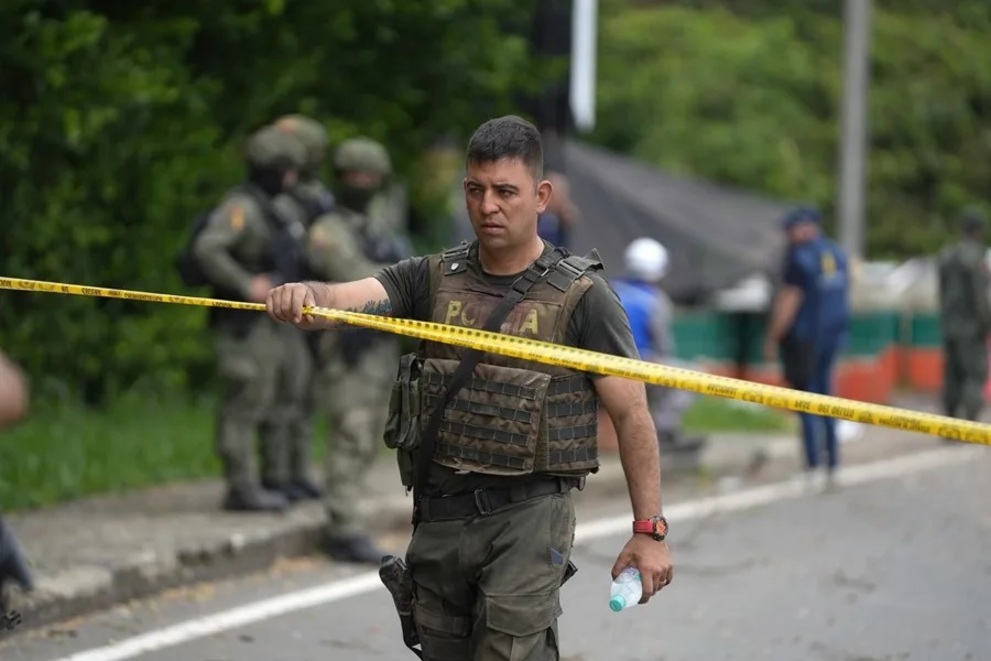
EFE@Ernesto Guzmán
Politics, Memory, and the Map Ahead
All of this unfolds inside an already volatile political environment. The conviction and 12-year sentence against Álvaro Uribe for witness tampering (still under appeal) have hardened partisan loyalties and will shape the coming presidential race. Petro’s musings about convening a constituent assembly—seen by critics as a bid to rewrite rules midstream—only add to the polarization. Meanwhile, in borderlands and corridors where judges and teachers retreat, families live once again under the arbitrary law of whoever controls the nearest hilltop.
Colombia has seen this cycle before. It knows that security without legitimacy fails, and legitimacy without security collapses. The state bent violence downward once because it married helicopters and intelligence with prosecutors, land titles, and crop substitution programs that actually reached markets. It punished abuses not only because courts demanded it, but because public faith in the uniform required it. The 2016 accord, for all its flaws, remains the only detailed scaffold for replacing an insurgent economy with a democratic one. Its partial implementation argues not for abandonment, but for seriousness.
The path forward demands more than slogans. It requires restoring aviation readiness and intelligence capacity, treating ceasefires as conclusions rather than starting bids, and protecting mayors, teachers, and social leaders who hold fragile state ground. It means depoliticizing security forces so competence—not ideology—selects commanders. None of this substitutes for the slower work of rural governance, but without it, the schools and clinics will stay rhetorical, not confirmed.
The murder of a young presidential contender, the return of car bombs, the sight of drones turned into weapons—all are warnings that hard-won gains can evaporate faster than they were built. Colombia does not need to choose between iron-fisted militarism and naïve pacifism. It requires a muscular, lawful security strategy that reclaims initiative, backed by a state that delivers justice and services as surely as it delivers force. Only then can the country carve out space for peace to breathe again.
Also Read: Trump’s Caribbean Strike Escalates U.S. War on Venezuelan Narco-Terrorists
Select quotations and attributions from NATO and regional leaders referenced above were reported by Americas Quarterly.

